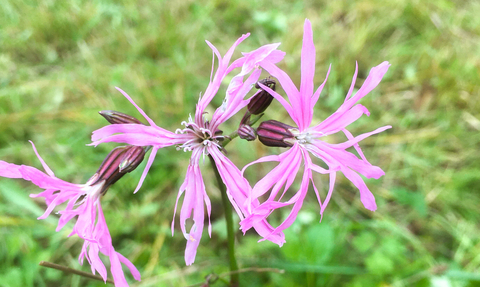
Ragged robin growing in a scrape at Spiceball Park in Banbury. Picture: Wild Banbury
Wild Banbury
Wild Banbury ran for over 10 years, concluding in December 2024. This community-based project aimed to inspire everyone in the town to value wildlife. Residents and local businesses were invited to find opportunities to make space for wildlife in their homes, work, and communities, to grow a Banbury that is greener, healthier and wilder.
The amazing network of green spaces across Banbury – gardens, verges, allotments, parks, and school grounds – are a vital resource, offering essential homes for wildlife in our increasingly crowded world. These urban spaces interconnect and provide a mesh of habitats for plants and animals, which in turn joins up with the wider countryside beyond the town. Wild Banbury helped to ensure they are cared for and cherished as places for nature.
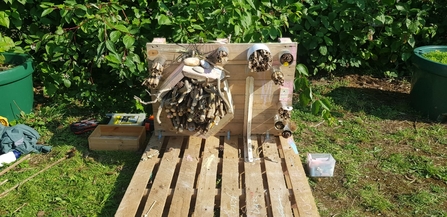
A bug hotel at Banbury Community Garden built with help from Wild Banbury. Picture: Wild Banbury
Improving our town for nature brings into our lives all the benefits of a healthy natural world. Working together to improve the environment as a place for wildlife brings people together, too, encouraging social engagement, active lifestyles, and the wellbeing that comes from close contact with the natural word.
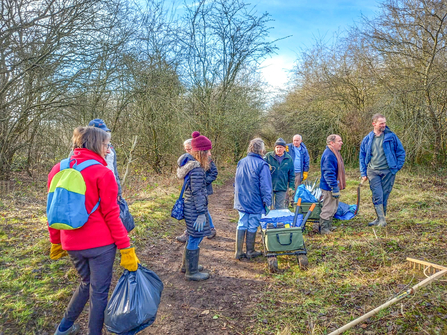
Wild Banbury volunteers doing conservation work at the town's Mineral Railway site in January 2022. Picture: Wild Banbury
Wild Banbury was a joint project between BBOWT, Cherwell District Council and Banbury Town Council.
The project:
- Held educational events and activities to inspire people to take action for wildlife
- Provided information and resources to help those in the area bring nature into their lives
- Supported and helped grow the network of groups that work to enhance local greenspaces for the benefit of wildlife and people
- Helped people to come together to improve community spaces for wildlife
- Worked with the local authorities to find ways of creating more space for nature within the town
Keep Banbury Wild
Tell us what you're doing for wildlife in the town! Have you created your own pollinator patch? Wood pile? Pond? Bee-friendly window box? Does your street have a hedgehog highway?
Share your wild stories: Tell us about your local wildlife encounters, update us on local wildlife news and share your favourite wild places in Banbury.
Join our Facebook group and tell us all about it or tweet @BBOWT using the hashtag #WildBanbury.
Let's join forces! Are you in a group working to support wildlife in and around Banbury? We love working with others and promoting the work they do, so it would be great to hear from you! Contact us at teamwilder@bbowt.org.uk
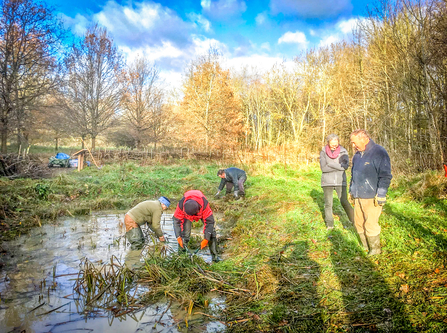
Wild Banbury volunteers working at the town's Spiceball Park in December 2021. Picture: Wild Banbury
Looking for ideas?
BBOWT has loads of suggestions for how to help wildlife in your garden and community spaces. Check out our Take Action for Wildlife, Wild About Gardens, and Action for Insects pages to find lots of tips and resources to download.
Stay up-to-date with our work
Sign up below to receive the latest news from BBOWT, tips about how you can help wildlife, plus information on how you can get involved.
Wild Banbury project partners
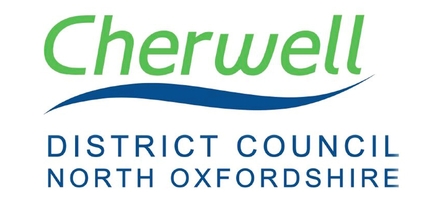
Wild Banbury was funded by Cherwell District Council’s wellbeing team. In addition to acknowledging the intrinsic value of nature itself, this reflects the importance the council places on the role of the natural environment in sociable healthy neighbourhoods.
For more inspiration on all things nature, see the council’s nature page here.
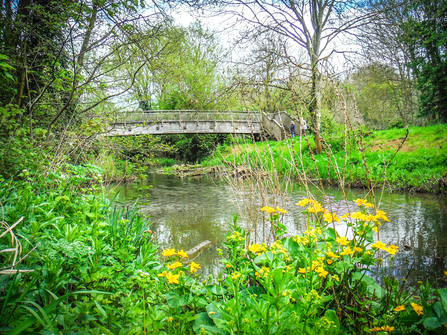
The River Cherwell running through Banbury's Spiceball Park by Judith Verdon
Discover Banbury's wild places
Spiceball Park
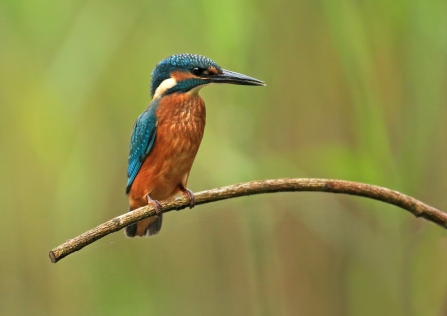
Kingfisher by Jon Hawkins - Surrey Hills Photography
Spiceball Park, Hennef Way / Cherwell Drive
Conservation volunteers work with Banbury Town Council to ensure that Spiceball Park offers a mosaic of of habitats and wildlife-spotting opportunities in the heart of Banbury. Keep an eye out for:
- The bright blue flash of a kingfisher along the River Cherwell.
- Striking birds such as sparrowhawks and bullfinches in the woodland.
- Bees, butterflies and other pollinators in the wildflower scrape.
- Mammals like weasels hunting in the long grass.
Try out our Nature Trail starting by the woodland walk over the bridge!
Hanwell Brook Wetland
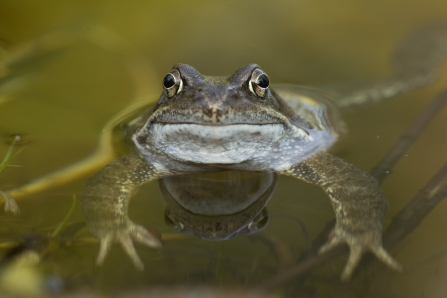
Common frog by Mark Hamblin/2020VISION
Hanwell Brook Wetland, Duke’s Meadow Drive
Hanwell Brook Wetland is the ideal place to look for a range of birds, dragonflies, damselflies, frogs and toads.
The boardwalk around this site takes in a rich range of habitats: pond, open wetland, reedbed, scrub, and old willow pollards which stand along the bank of the brook.
Conservation volunteers work with Banbury Town Council to manage the balance between trees, scrub and open ground, so maximising opportunities for wildlife. This is achieved by coppicing and pollarding the willows, cutting back suckers and controlling excess reed growth and brambles. Scything the open areas in autumn encourages a wonderful range of flowers to flourish such as bugle, meadowsweet and greater bird’s-foot trefoil.
Mineral Railway
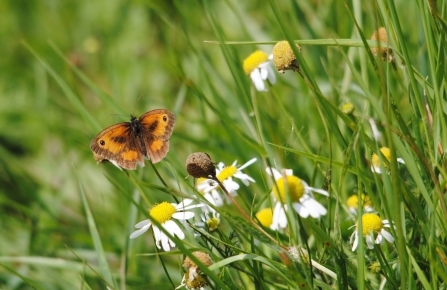
Gatekeeper butterfly on oxeye daisies by Amy Lewis
Mineral Railway by Beaumont Close
This raised embankment is a wonderful wildlife corridor that cuts west-east through the northern part of Banbury. It marks the route of a former railway line that transported limestone from quarries in Wroxton. This closed in 1967 and was later dismantled, leaving only a few brick structures as clues to its industrial past.
The Beaumont Close end of the Mineral Railway is an ideal place to look for butterflies, day moths, grasshoppers, crickets, and urban foxes. Walk quietly and you might happen upon a green woodpecker feasting on ants in one of the glades.
Conservation volunteers are pushing back the scrub and restoring open grass areas, encouraging wildflowers and opening up this sunny corridor to a wealth of stunning creatures.

